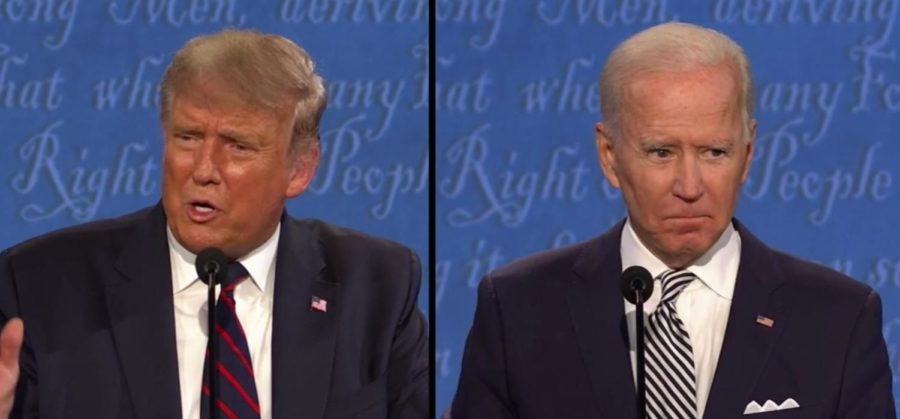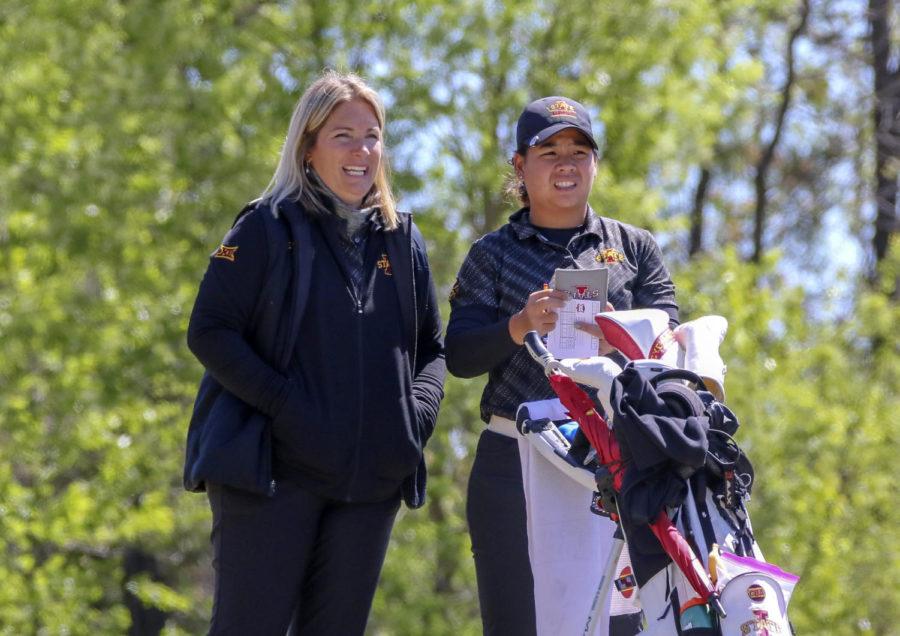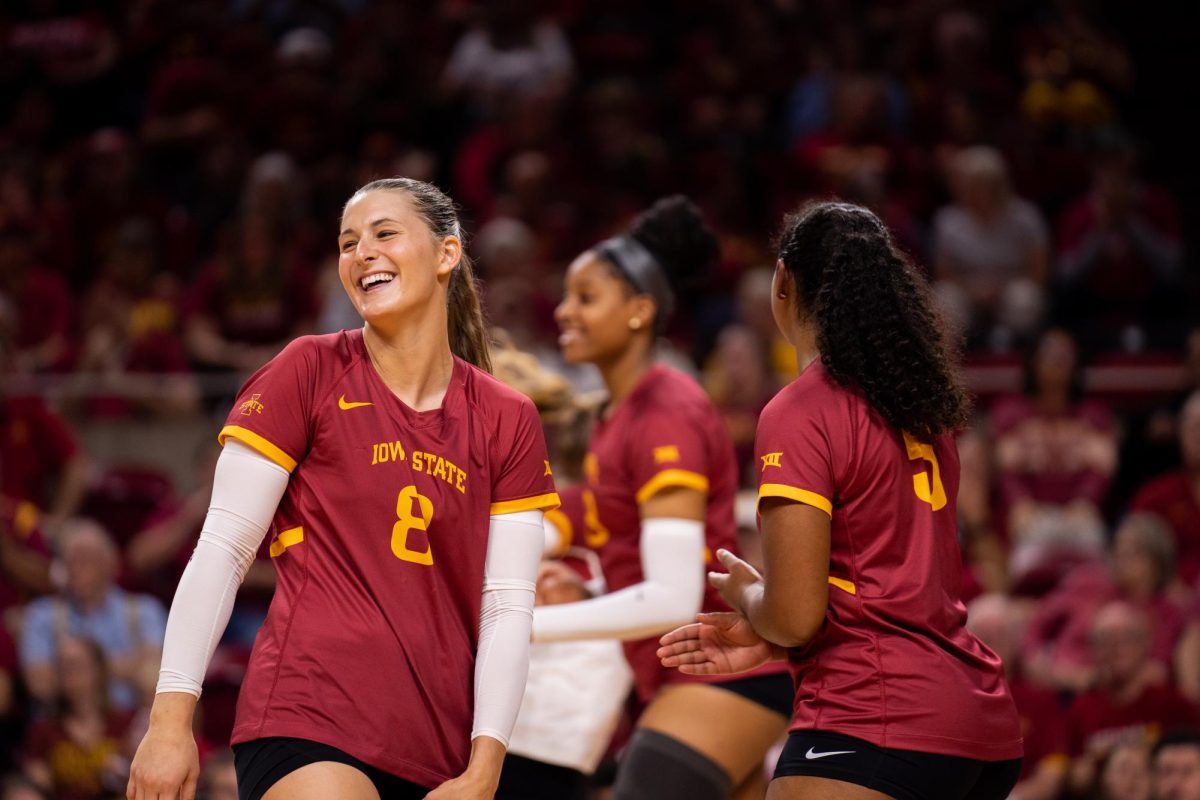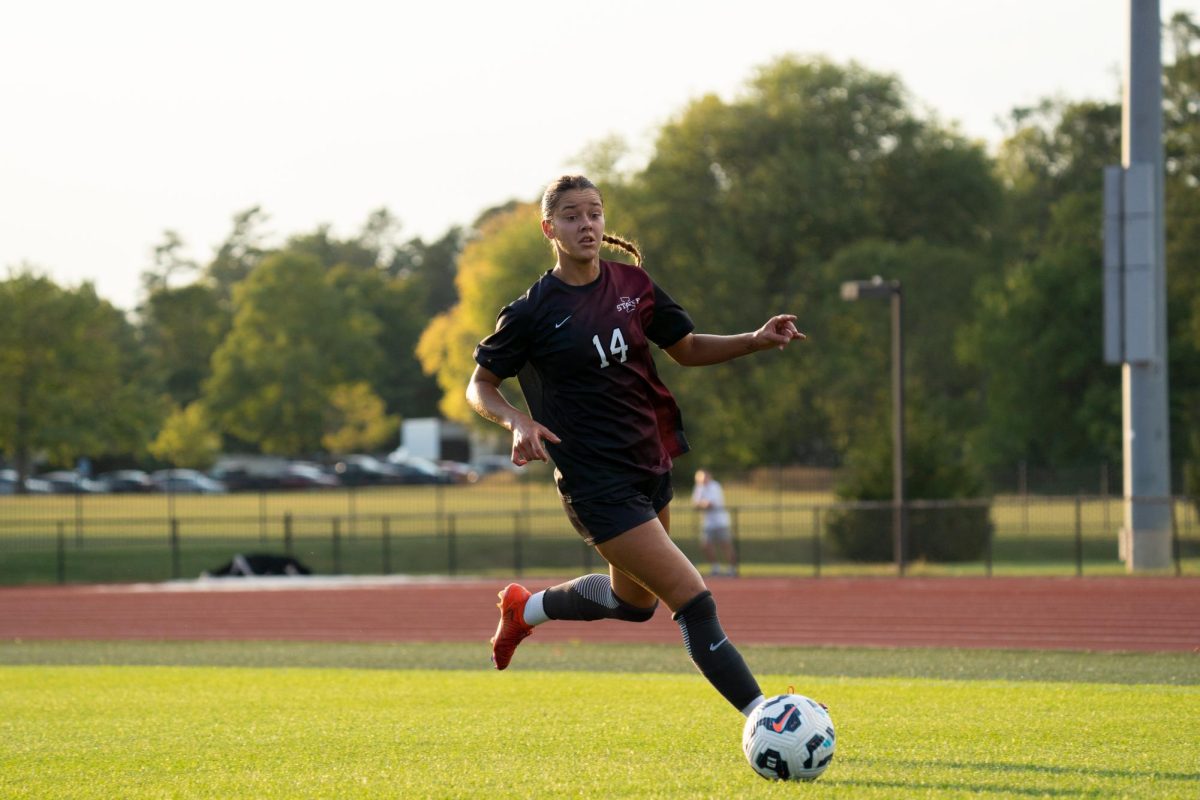Editorial: 2020 presidential endorsement part 2
President Donald Trump and Democratic presidential nominee Joe Biden were originally supposed to take to the stage again for the second presidential debate Oct. 15.
October 18, 2020
Features from the Campaign Trail
Next, let’s dive into the different things both Trump and Biden have done, as well as events they have attended during their campaigning in 2020.
Trump
Throughout his campaigning, and even after the onset of the COVID-19 pandemic, Trump has hosted many rallies, most of which have been in person with tons of crowds and little to no mask wearing. His event in Tulsa, Oklahoma, was widely criticized — for a variety of reasons — and public health officials there said it likely contributed to the spread of COVID-19 in the area.
Very recently, Trump hosted a Rose Garden ceremony for Supreme Court nominee Amy Coney Barrett. The event was in person, like many of his rallies. The Rose Garden event has been considered a superspreader event and more than a dozen officials have tested positive since that event, including Trump.
Trump also announced he would not participate in the second debate due to its online format, continuing his negative views on virtual formats. Trump’s campaign manager Bill Stepien said there was “no medical reason” why the debate should be shifted virtually. He cited a memo from White House physician Sean Conley, who said Trump would be safe for public events by Saturday.
Back in August, Trump delivered his Republican National Committee nomination acceptance speech from the White House lawn, which caused a lot of backlash. Democratic House Speaker Nancy Pelosi said Trump would “degrade the White House,” while Republican Sen. John Cornyn called the plan “problematic.” Other critics accused Trump of politicizing the seat of presidential power, saying such a move could even be illegal.
Trump’s campaigning seems to have featured a reliance on in-person events and moved away from wanting virtual events. Many of his events have received backlash either for their COVID-19 implications or for controversial political moves.
Biden
Compared to Trump, Biden’s campaign has been less visible with no large rallies or planned gatherings after the COVID-19 pandemic started. One example of this is when State Rep. Tyrone Carter, D-Detroit, hosted Biden and four steelworkers in his backyard for the gathering. While wearing masks and sitting in distanced patio chairs, Biden and the workers discussed how the COVID-19 pandemic has affected their families and co-workers.
Biden’s CNN town hall, where he accepted questions from prospective voters, was pretty memorable for his campaign. The town hall took place in September and was the first town hall he took part in since accepting the nomination. During the event, Biden mocked Trump’s claims that electing him would lead to widespread violence and chaos in the streets of America. He also touted his own ability to unify the country, pointing to his record as a senator and saying he never questions his political opponents’ motives.
Biden’s Gettysburg speech is considered by some to be the best speech of his campaign so far and Biden didn’t mention Trump once during it. Overlooking the Civil War battlefield of Gettysburg in the battleground state of Pennsylvania, Biden committed to healing the United States: “We can end this era of division. We can end the hate and the fear. We can be what we are at our best: The United States of America.”
Biden’s most recent town hall Friday got 1 million more viewers than Trump’s did, showing more viewers engaged with Biden and chose his content over Trump’s. Biden also evaded questions like Trump, specifically dodging when George Stephanopoulos, the evening’s host, pressed him on court packing.
Biden’s campaigning seems to have featured social distancing as an important part of increasing overall COVID-19 safety, his speeches and town halls focus on moving on from Trump’s America and finding a way to lessen the divide in the United States.
The Debate
Finally, let’s look at how both parties performed during the first presidential debate of the election.
Trump
Trump’s overall performance during the debate focused more on attacking Biden and Biden’s views rather than reaching out to viewers at home and addressing possible concerns. Trump’s response to COVID-19 was more of the same of what he had been touting before the debate. He also mocked Biden for wearing a mask, which is concerning considering he tested positive for COVID-19 a week later.
Trump did manage to rattle Biden a couple times with his onslaught of verbal attacks, which could be good for him considering a major part of Trump’s strategy has been to question Biden’s mental capacity.
During the first presidential debate Trump did what he was expected to do, what he did to get elected in 2016 and what he has done for his entire presidency, and it has generally worked for him. He isn’t a politician of substance, but he does write his own narratives, which excites his base. Few people would argue he won the first debate.
Biden
Biden’s overall performance during the debate focused on reaching out to Americans through the camera rather than responding to Trump’s verbal attacks. A good moment for him was when he turned what could have been a big issue for him, Hunter Biden’s Ukraine connections, into a sympathetic moment. Highlights for Biden were when he continued to speak directly into the camera to try to connect with Americans. He was stronger here than when he was trading barbs with Trump.
Some low points for Biden focused around being less aggressive than Trump — meaning he got less airtime — as well as his lack of hits on Trump, particularly around COVID-19 things, like Trump’s claim that no harm came from his rallies, even though Herman Cain died due to attending one.
Though Biden had high points with his connecting to the American people through the camera, he did not answer a few key questions, including about his view on packing the courts. He also tried to separate the Biden Plan and the Green New Deal, even with many clear similarities.
Outcome
Overall, the debate didn’t do much for the American people, it was less of an informative event on both sides and rather a clash of words between the two old white men in front of their constituents.
Neither candidate beat the other in the debate, but they both probably achieved what they wanted to some degree. Trump continued to attack Biden’s stances whereas Biden worked every angle he could to remain relevant to the American people. The debate had little substance, meaning neither candidate could build a good argument against the other or even have an actual conversation. Both candidates did project their message to their supporters, but neither side probably swayed many voters.
Our Choice
After looking at how both parties performed during the debate, their stances on topics important to the American public and major events that occurred during their campaigning, the Iowa State Editorial Board has decided to endorse Joe Biden and Kamala Harris to be the next president and vice president of the United States.
Biden’s campaign focuses on human issues important to the American people and supports solutions to those issues through collaboration, job creation and the overall betterment of American society, not just corporations and the 1 percent. His plans focus on rebuilding the economy by creating new jobs, jobs that also play into his climate plans for green energy in the United States. He has generally been a nonaggressive man, taking the more passive approach in the first debate, he has also chosen to move away from attacking Trump in his campaign speeches and focused more on talking directly to Americans and their needs.
All of these are the things the United States needs right now from its president — a peacemaker and a person looking out for the American people and their interests, not someone who attacks his people with tear gas and refuses to denounce white supremacy on live TV.





